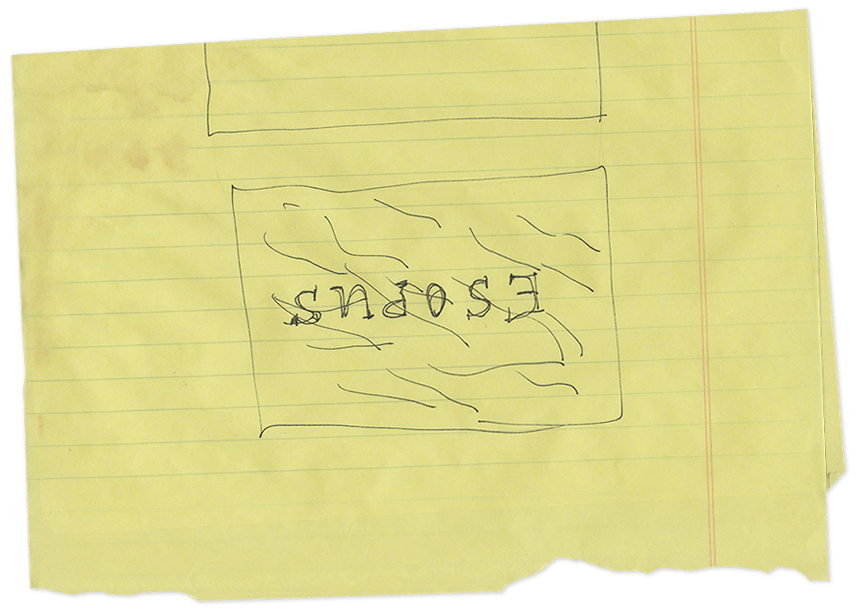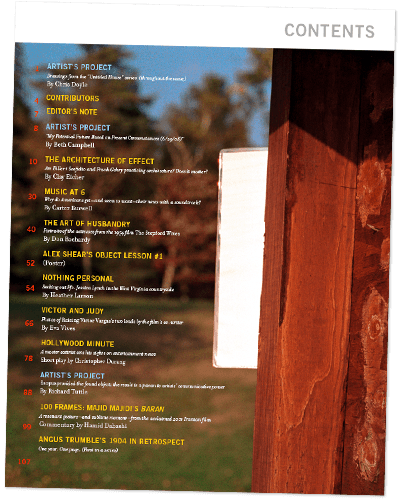


Table of contents from Esopus 1

Editor’s Note
By Tod Lippy
The source of the Esopus is in the Catskill Mountains. It begins as a small creek and grows steadily as it meanders north, then southeast, then northeast until it empties into the Hudson River. In the 19th century it was a powerful stream that carved canyons along its course, but in the 1930s its current was intersected by the construction of the Ashokan Reservoir, which stores much of New York City’s water supply. Today, the part of the stream that runs below the reservoir is a brackish flow that serves only to permit any spillover to reach the Hudson. Above the reservoir, though, where I and some of my friends go to get away from New York City, the Esopus is still vibrant, full of rapids and trout.
In 2003, the media creates, defines and limits our experience to an extraordinary degree. Nearly everything we perceive about the world—from major public events to the most intimate gesture—is filtered through a vast, finely woven net maintained by entertainment conglomerates and advertising, public relations and marketing concerns. The demands of profit determine the color and content of every communication, diluting its message and compromising both the sender and the receiver.
This is particularly vexing for creative people. “Economics and art are strangers,” as Willa Cather once wrote (at a time when they were perhaps a little less familiar with each other), yet it’s obvious how much commercial considerations can affect creative decision-making, especially now. Even those who are determined never to heed such considerations are forced to watch their work pass through economically driven filters, losing some, if not all, of its meaning along the way.

.jpg)